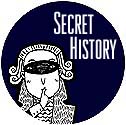
Comment
on this story |
 |

A presidential museum? In Knoxville?
by Jack Neely
Many have tried, and given up, at coming up with Knoxville's Unified Theory: that thing that sets us apart from all other cities and is, moreover, marketable.
Knoxville has a superfluity of odd niches: the early-country-music heritage, the idiosyncratic literary heritage, the Vols. All are worth celebrating, and each accounts for a certain number of tourists. But they're all limited in their appeal. Knoxville's Unified Theory—that one aspect that will mean something to everybody—has eluded us. All I've been able to work out is that Knoxville represents American history in a way that may be unique, or close to it.
This is my postulate: Everything that has happened in the constitutional history of the United States has happened in Knoxville, in one way or another. Name another city that hosted abolitionists, slaves, slaveholders, free blacks, Cherokee traders, planters, mountaineers, Confederates, Unionists, industrialists, Western outlaws, Ivy League scholars, socialists, gangsters, German composers, mountain fiddlers, nuclear engineers, Swiss vintners, redneck moonshiners, pioneer prohibitionists, feminists, Presbyterians.
Maybe there are other cities like that. But Knoxville's several contradictory roles—its place as the most Unionist city in the South, for example—seems to give it an unusual focus. Perhaps more comprehensively than other American cities, Knoxville has been a stage for American history.
I once had the honor of working with author Alex Haley on a Bill of Rights bicentennial project for local TV, illustrating the first 10 amendments through incidents in Knoxville history. Examples of each right being either defended or trampled here were easy to find. In Knoxville you can study the whole of America's constitutional history. But what can you do with that? I'm told "America's Constitution-Testing City" doesn't work on a brochure.
Then comes this presidential museum idea. Coming on the heels of the Tivoli Gardens and the Universe Knoxville planetarium, it sounded equally wacky. It'll take more than a few more visits from George W. Bush for people to think of Knoxville when they think of U.S. presidents. You'd think such a museum should be in Philadelphia or Washington or New York. Or near the homes of some of our great presidents: Northern Virginia, or greater Boston.
But maybe those connections to individual presidents are liabilities. Those places are full of fiery presidential partisans. Maybe a presidential museum should be in some neutral, but comprehensively historic place.
As it happens, America's constitutional history is also America's presidential history. Knoxville was christened as an administrative capital for the Washington administration in its first term. Knoxville and the American presidency are almost exactly the same age. Blount Mansion and the White House were built the same year.
You can, at least, talk about presidents here. Andrew Jackson? They threw parties for him right over there, at the Lamar House. Washington? He was the boss of the guy who decided to build a city here. FDR? TVA's one of the most conspicuous survivors of his New Deal. Teddy Roosevelt encouraged our local efforts at conservation. Lincoln fretted about liberating us. New Year, 1864, as part of the occupying Union army here. Jefferson wrote a letter to Knoxville recommending that UT try a suburban campus. Rutherford B. Hayes was heckled on Gay Street, just a few feet away from where Andrew Johnson had earlier been shot at. Nixon made his first public appearance after the Cambodia bombings here. Gay Street has hosted parades in honor of visitors Polk, Hayes, Benjamin Harrison, Taft, McKinley, both Roosevelts, Reagan. Ike and JFK gave speeches at the airport. LBJ visited Knoxville slums at the beginning of his War on Poverty. Ford gave a policy speech here. Reagan opened the World's Fair; Carter visited it. Knoxville and the American presidency have been on intimate terms.
Also, Knoxville was the locus of two incidents sometimes cited in the evolution of the American two-party system. The abortive Sevier-Jackson duel of 1803 has been called the origin, or precursor, or symbol, of the political rift between Tennessee's future Republicans and Democrats. Considering how central Tennessee was to American politics in the first half of the 19th century, their personal dispute may have reverberated farther than that.
Three decades later, Knoxvillian Sen. Hugh Lawson White declared for the presidency as an anti-Jacksonian Democrat, defying Jackson, his former ally, to oppose Martin Van Buren. The weird three-versus-one election of 1836, by most accounts, helped form the Whig vs. Democrat dynamic that evolved into the Republican vs. Democrat contest later on.
None of the presidents lived here, of course, unless you count Jackson, who in his early career as a circuit judge kept a room downtown. But maybe that's our advantage; we could hardly be accused of favoritism.

February 12, 2004 • Vol. 14, No. 7
© 2004 Metro Pulse
|





